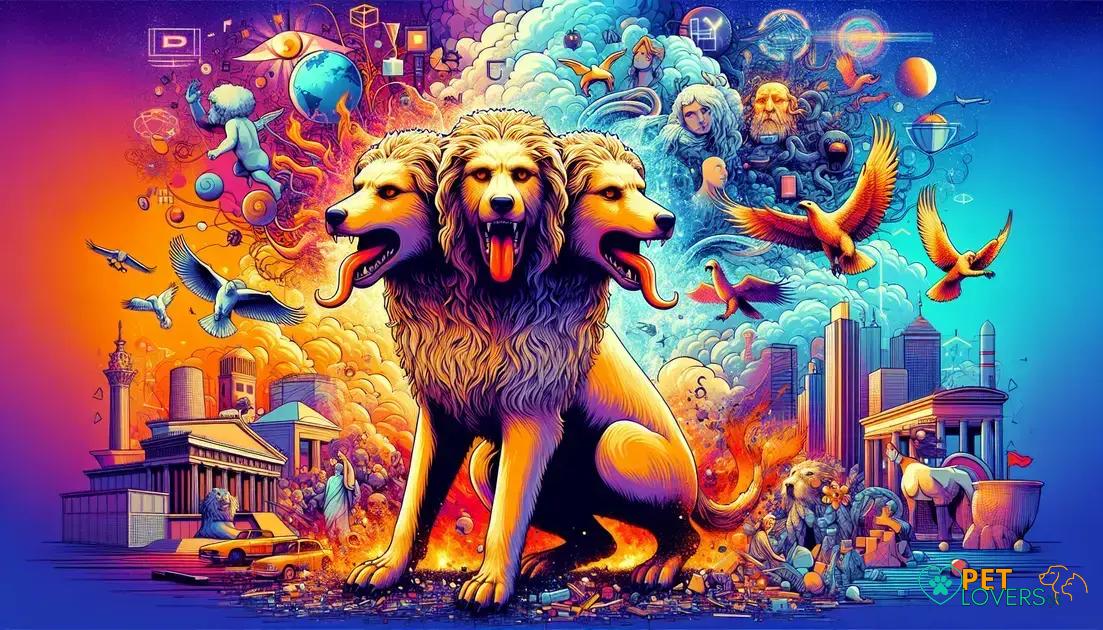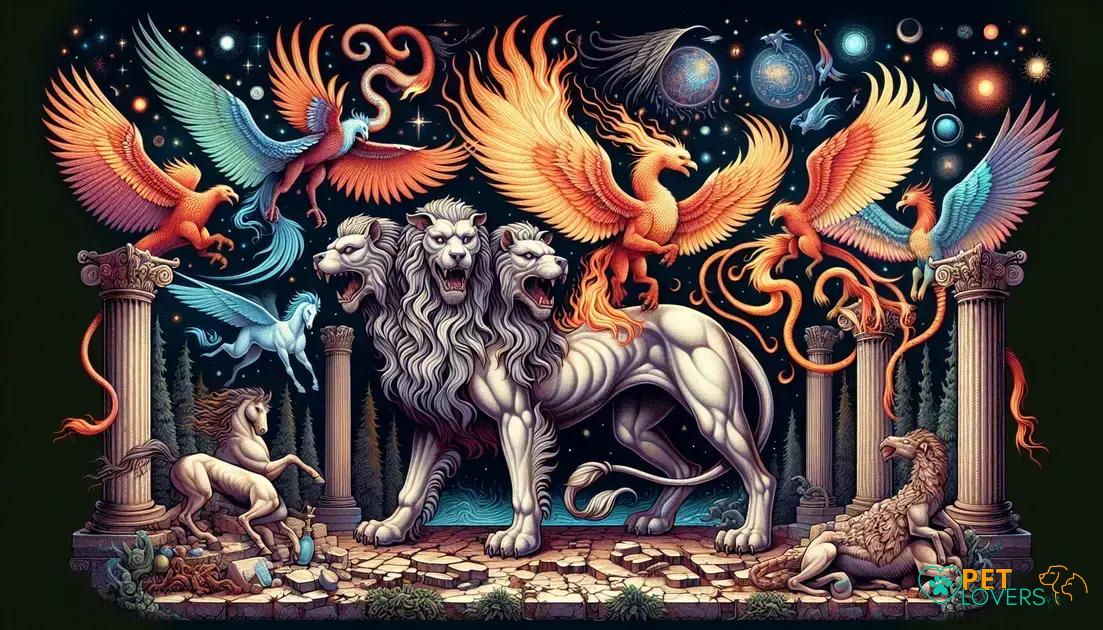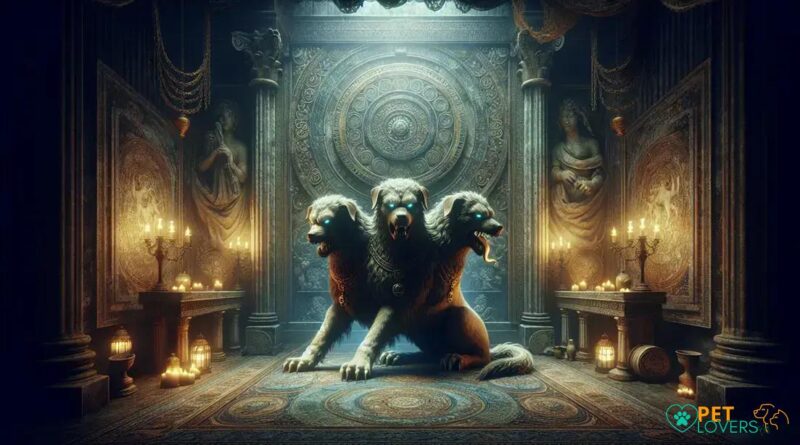Cerberus: The Three headed Dog of the Underworld
Cerberus, the legendary three-headed dog, guards the gates of the Underworld. This mythical beast has fascinated scholars and enthusiasts alike. What are the secrets behind Cerberus’s origins? How has this creature been depicted in popular culture? Dive into the compelling narrative of Cerberus and uncover the symbolism and interpretations that make this guardian so intriguing.
The Origins of Cerberus
Cerberus, the three-headed dog of the Underworld, has a fascinating origin deeply rooted in Greek mythology. According to the myths, he is the offspring of Echidna and Typhon, both of whom are fearsome creatures in their own right. His primary duty was to guard the gates of the Underworld, ensuring that the souls of the dead remained within and that no living being could enter without permission.
His three heads are often said to symbolize the past, present, and future, or in some interpretations, birth, youth, and old age. This powerful imagery emphasizes his role as a guardian of time and life’s natural cycle.
Additionally, Cerberus is frequently depicted with a serpent’s tail and sometimes a mane of snakes, adding to his formidable appearance. These attributes link him to other mythological guardians and wardens, enhancing his status as an almost invincible protector.
Cerberus’s mythology intertwines with many famous stories, such as the Twelve Labors of Heracles. Heracles’ final labor required him to capture Cerberus and bring him to the surface world without using weapons, showcasing both the hero’s strength and the creature’s significance within Greek mythos.
Understanding Cerberus’s Role
The importance of Cerberus in Greek mythology cannot be overstated. As a sentinel of the Underworld, he was more than just a beast; he was a symbol of the passage from the world of the living to the realm of the dead. His presence underscored the inevitability of death and the need for order in the afterlife.
Cerberus in Popular Culture

Movies and TV Shows
The three-headed dog, Cerberus, has made numerous appearances in popular culture. In film and television, Cerberus often guards important locations, staying true to his mythological role. For instance, in the Harry Potter series, a creature named Fluffy is depicted as guarding the Philosopher’s Stone.
Video Games
In the realm of video games, Cerberus shows up as a formidable enemy or guardian. Games like Resident Evil and God of War feature Cerberus as a challenging opponent, drawing on its mythic strength and ferocity.
Literature
Books and comic series frequently incorporate Cerberus into their narratives. In Rick Riordan’s Percy Jackson series, Cerberus guards the entrance to the Underworld, remaining faithful to his mythological origins.
Music and Art
In addition to literature and film, Cerberus has inspired various forms of art and music. Artists often depict him with menacing features and musicians sometimes reference him in lyrics to evoke a sense of danger or guardian-like presence.
Symbolism in Modern Culture
Cerberus continues to be a symbol of protection and power. His representation as a guardian against intruders or a metaphor for insurmountable barriers remains potent in modern narratives. This multifaceted symbolism ensures that Cerberus maintains a significant place in today’s pop culture landscape.
Symbolism and Interpretation
The three-headed dog of the underworld, commonly known as Cerberus, holds significant symbolism and interpretation in ancient mythology. Each of its heads is thought to represent different aspects of mortality: the past, present, and future. This triad of existence echoes the inevitable cycle of life.
Moreover, the representation of Cerberus as a guard to the underworld signifies the barrier between life and death. It reinforces the belief that the underworld is not easily accessible to the living and serves as a warning to those who might attempt to cross this boundary.
Interpretations expand into
psychological
realms, where Cerberus embodies internal struggles and the challenges faced in confronting one’s fears. Its menacing appearance is a metaphor for the obstacles that guard our deepest, darkest secrets.
Furthermore, in literature and art, Cerberus is often depicted as loyal to Hades, the god of the underworld. This loyalty can be interpreted as a symbol of unwavering duty and the omnipresence of death in the human psyche.
Comparisons with Other Mythical Creatures

When comparing Cerberus, the three-headed dog of the underworld, with other mythical creatures, there are notable differences and similarities. For example, Hydra, another multi-headed creature from Greek mythology, possesses multiple serpent heads and regenerates two heads for every one cut off. Unlike Cerberus, who stands as a guardian, Hydra’s story often portrays it as a monstrous obstacle for heroes to overcome.
In Norse mythology, Fenrir, a giant wolf, is destined to bring about Ragnarök. While both Cerberus and Fenrir are fearsome canines, their roles differ: Cerberus guards the underworld, whereas Fenrir is a harbinger of apocalypse.
Additionally, examining creatures like the Sphinx, we find that although it is not a canine, it similarly serves as a gatekeeper. The Sphinx’s riddles contrast with Cerberus’s brute force approach to securing realms.
Other comparisons include Chimera, which, much like Cerberus, has multiple heads, but it is a hybrid with heads of different animals, adding to its fearsome appearance. While the Chimera is often depicted as a creature causing havoc, Cerberus’s narrative is more about guardianship and control.
These comparisons showcase how different cultures use these multi-headed beings to symbolize power, protection, and chaos, reflecting various aspects of the human condition and cosmological beliefs.
Modern Representations of Cerberus
In recent years, Cerberus has found a place in various modern media, highlighting its enduring appeal. One key representation is in video games, where Cerberus often serves as a formidable adversary or a protective guardian. For example, in the popular game Hades, Cerberus is portrayed as a loyal companion to the protagonist, offering a unique twist on the traditional myth.
Moreover, TV shows and films have adapted Cerberus with varying degrees of fidelity to the original myth. In the Harry Potter series, a creature named Fluffy, a clear nod to Cerberus, guards the Philosopher’s Stone. This adaptation keeps the essence of the mythical watchdog but gives it a whimsical twist suitable for a younger audience.
Graphic novels and comic books also explore modern takes on Cerberus. Marvel Comics, for instance, includes Cerberus in its pantheon of mythical creatures, often pitting the three-headed dog against superheroes in epic battles.
Cerberus in Modern Art
Artists continue to draw inspiration from Cerberus, with contemporary artworks depicting it in varying styles, from traditional paintings to digital art. These modern interpretations often emphasize the terror and majesty associated with the mythological creature.
In literature, authors use Cerberus as a metaphor or a character in new mythologies, exploring themes of protection, fear, and the unknown. These nuanced portrayals help keep the legend of Cerberus alive and relevant in modern storytelling.
Overall, the modern representations of Cerberus reflect a rich tapestry of interpretations, showcasing the flexibility and timelessness of this mythical creature.




